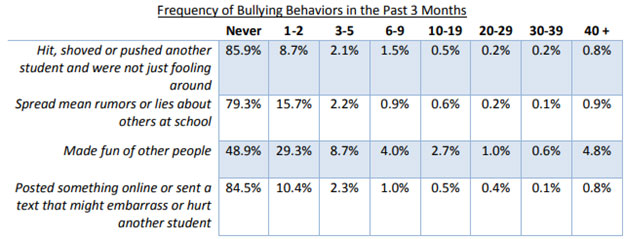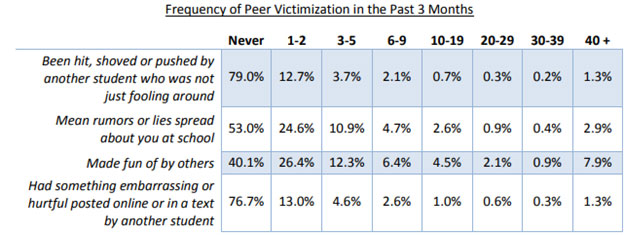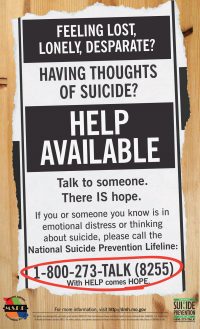Bullying
Bullying
The rock band, Pearl Jam, released a song called Jeremy in 1991, and it told the sad but all too common story of a child that was neglected at home, bullied at school, and as a result, “Spoke in class today” by completing suicide. Although much has changed in the mental health and bullying arena since then, many children still suffer in silence, feel powerless, and turn their anger and frustration into self-harm.
Fast forward to 2018, and a new perspective on bullying has been cast by the Netflix series, 13 Reasons Why. The story line depicts an evolved, inescapable, and instantly widespread form of bullying which occurs online via social media. Regardless of the source or type of bullying, one constant has remained unchanged, it hurts everyone involved.
The good news is that bullying can be prevented, and many school districts and communities are now developing policies, changing language, and creating cultures that better protect children. Please share these resources with your school, youth group, coalition, and community to ensure that all our children thrive emotionally and behaviorally.
Bullying Behaviors
Youth were asked to report the number of times in the past three months they either bullied others or were bullied by another student through particular behaviors. Bullying behaviors included physical bullying (whether a student had hit, shoved or pushed another student and were not just fooling around”) and emotional bullying, including spreading mean rumors or lies, making fun of others, and embarrassing or hurting another student through the use of a cell phone or the internet.
The majority of students reported that they had not engaged in physical bullying (85.9%), spread mean rumors or lies at school (79.3%) or embarrassed another student online or via text messaging (84.5%). However, over half (51.1%) of the youth did report making fun of other people, and 4.8% reported doing this 40 or more times in the past three months. There was a significant decrease in students reporting making fun of other people from 2016 to 2018.
The type of bullying also varies by subpopulation. For instance, males are much more likely (19.3% vs. 11.7%) to report physical bullying. Females were more likely to spread mean rumors (25.7% vs. 19.9%) CHAPTER 3 – PROBLEM BEHAVIORS 24 or embarrass another student via text messaging or online (20.3% vs. 12.9%). African Americans were more likely to say they have hit, shoved or punched another student (23.9%) than Caucasians (13.3%). Finally, Latinos (26.1%) were more likely to say they’ve spread mean rumors or lies about other kids at school than non-Latinos (22.8%) and to report physical bullying (20.0% vs. 15.3%).
Peer Victimization
Students were asked if they were bullied on school property in the past year. Bullying was defined as, “when one or more students tease, threaten, spread rumors about, hit, shove, or hurt another student over and over again. It is not bullying when two students of about the same strength or power argue or fight or tease each other in a friendly way”. More than a quarter (28.7%) reported that they had been bullied on school property; females were more likely to be bullied on school property than males (31.7% vs. 25.6%).
Source: 2018 MO Student Survey
What Is Cyberbullying? An Overview for Students, Parents, and Teachers
Attending school offers a unique environment for students, but it can also expose them to online harassment and bullying from others. This guide offers a plethora of information on cyberbullying including how to spot it, handle it, and overcome it.
Infographic/Fact Sheets
Links
- American Psychological Assn. Info
- Bullying and Future Drug Use
- Bullying and Teasing: No Laughing Matter
- Cyberbullying Fact Sheets
- PACER’s National Bullying Prevention Center
- Psychology Today’s “Understanding Bullying”
- Stop Bullying
- The Bully Project
- The American Academy of Child and Adolescent Psychiatry
- Who can help you with bullying issues at your school?




